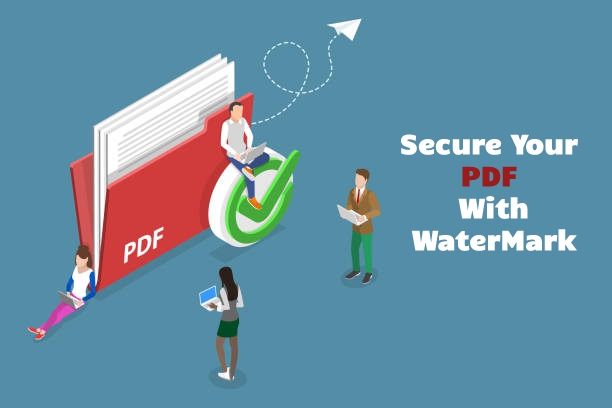If you are the writer or publisher of any original work, you need to embed certain levels of security to ensure its safety. Similarly, if you are employed in an organization, sensitive files and documents that need to be shared both internally and externally must be safeguarded with a level of security — one of them being through watermarking.
Working with people in or out of your company can set your organizational data in danger. For instance, sending a PDF document through email does not guarantee its security or safety. Therefore, one way of ensuring the safety of the content in your PDF document that you plan to send out through email is to add watermarks to the PDF.
Contents [hide]
Understanding what is a watermark
A watermark could be a visible or nonvisible mark on a document or file. There are various kinds of watermarks. For example, you may want to add an actual copyright watermark on a professional photograph, or you may want to create a unique watermark that can identify the user or the recipient of the PDF document. A watermark could include anything from a brand name, name of the author or publisher, email address, unique ID, string of letters or words, etc. Watermarks are used on sensitive and valuable information such as e-books, passports, M&A transactions, financial data, and much more. Watermarks are a security level that discourages users from sharing or copying PDF files or documents as it helps identify the user responsible for illegal or unauthorized sharing.
The need for watermarks in PDF documents
As an excellent way of stopping counterfeiting, watermarks can easily discourage any user or viewer from replicating, forwarding, or distributing your classified information. In addition, watermarks that include identifying the receiver are far more effective in preventing piracy or misuse of your PDF documents. That means, with watermarks, if your PDF documents end up in the wrong hands, you can always trace them back to where they originated if they were disclosed on the Internet. You can also make use of watermarks on anything from financial information to legal documents, NDA contracts, and agreements, to PDF files comprising essential IPR.
Adding a watermark can be easy and effortless but, you need the right kind of watermark to add a layer of security and stop documents from being stolen or misused. That’s because watermarks added with some watermarking tools can easily be removed by just opening the documents in the application the watermark was added from.
Importance of dynamic watermarks
Watermarking your PDF documents is a great way to help prevent data leaks. And if a data breach event takes place, watermarking can quickly help you trace the source. However, watermarks can easily be cropped or photoshopped out of the document with a bit of effort. And therefore, you need permanent or nonremovable PDF watermarks enforced by DRM copy protection.
A dynamic watermark is a text-based watermark. It uses placeholders or variables that are replaced by user and system data when a PDF document is viewed or printed. Adding dynamic watermarks can help protect PDF files as the variables were chosen at the time of viewing and printing capture the relevant details of the user’s credentials such as email address, name, date, and time of usage as the watermark. This makes watermarking PDF documents even more secure and robust as they are dynamically derived from the user’s license rather than securing your document for every user with fixed watermark information.
Dynamic watermarks:
Can be inserted automatically during the viewing and printing of the document, instantly identifying the user and helping to prevent the redistribution of content.
Cannot be removed or eliminated through editing software, password recovery applications, or PDF editors.
Reveal unique and different watermarks each time a document is viewed or printed.
Contribute both dynamic and static texts as well as static image watermarks to the PDF data.
Displays watermark in customized location or repeatedly on the PDF page.
Make use of a wide range of multiple fonts and shades, styles, background colors, and opacity for uniqueness.
Conclusion
With PDF DRM technology, you get the option of creating permanent and dynamic watermarks that are non-removable. Digital rights management controls impose the right kind of dynamic watermarks on your secure PDF documents through its multiple methods of making the watermarks enforcable and preventing them from being easily removed. With PDF DRM, you can protect your PDF content securely without the threat or danger of modification.
Make use of dynamic watermarks through PDF DRM to prevent the falsification of PDF documents, act as a significant deterrent, display the classification of your content, link your PDF file with specific authorized users, and more importantly, establish the actual owner of the document.

